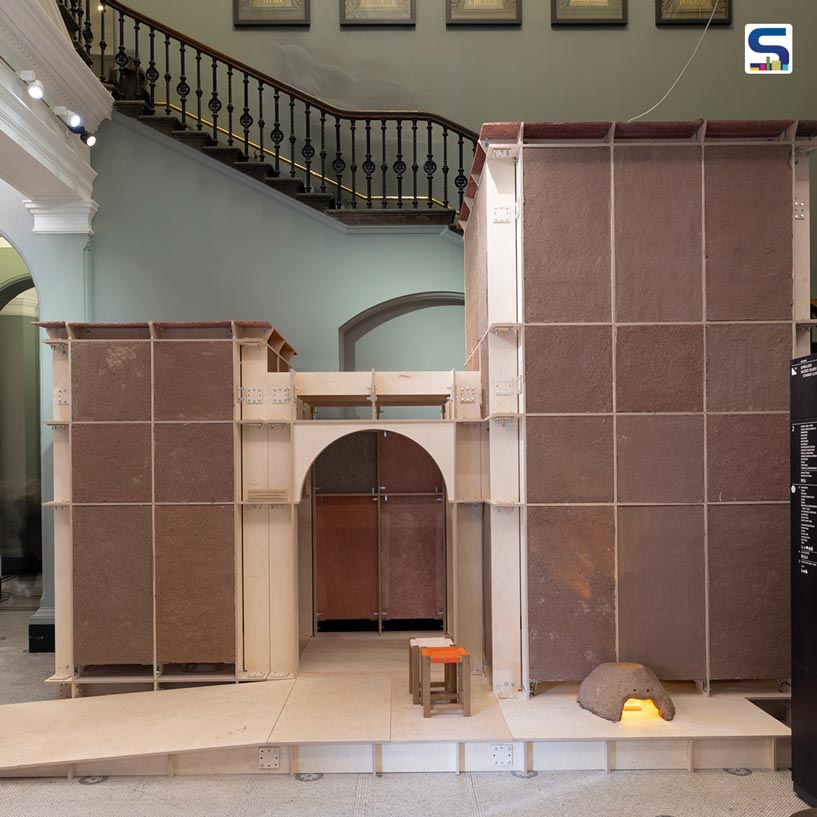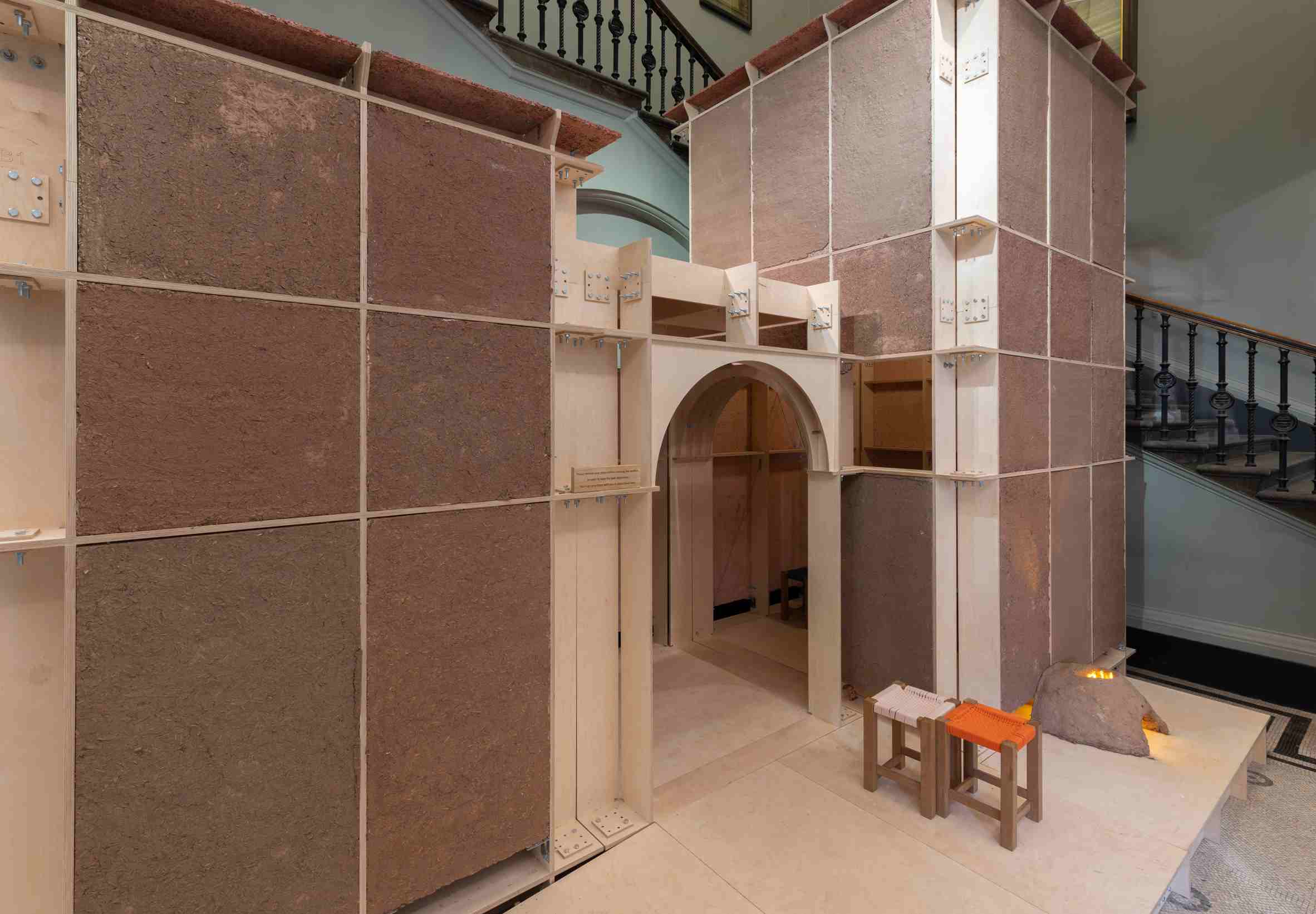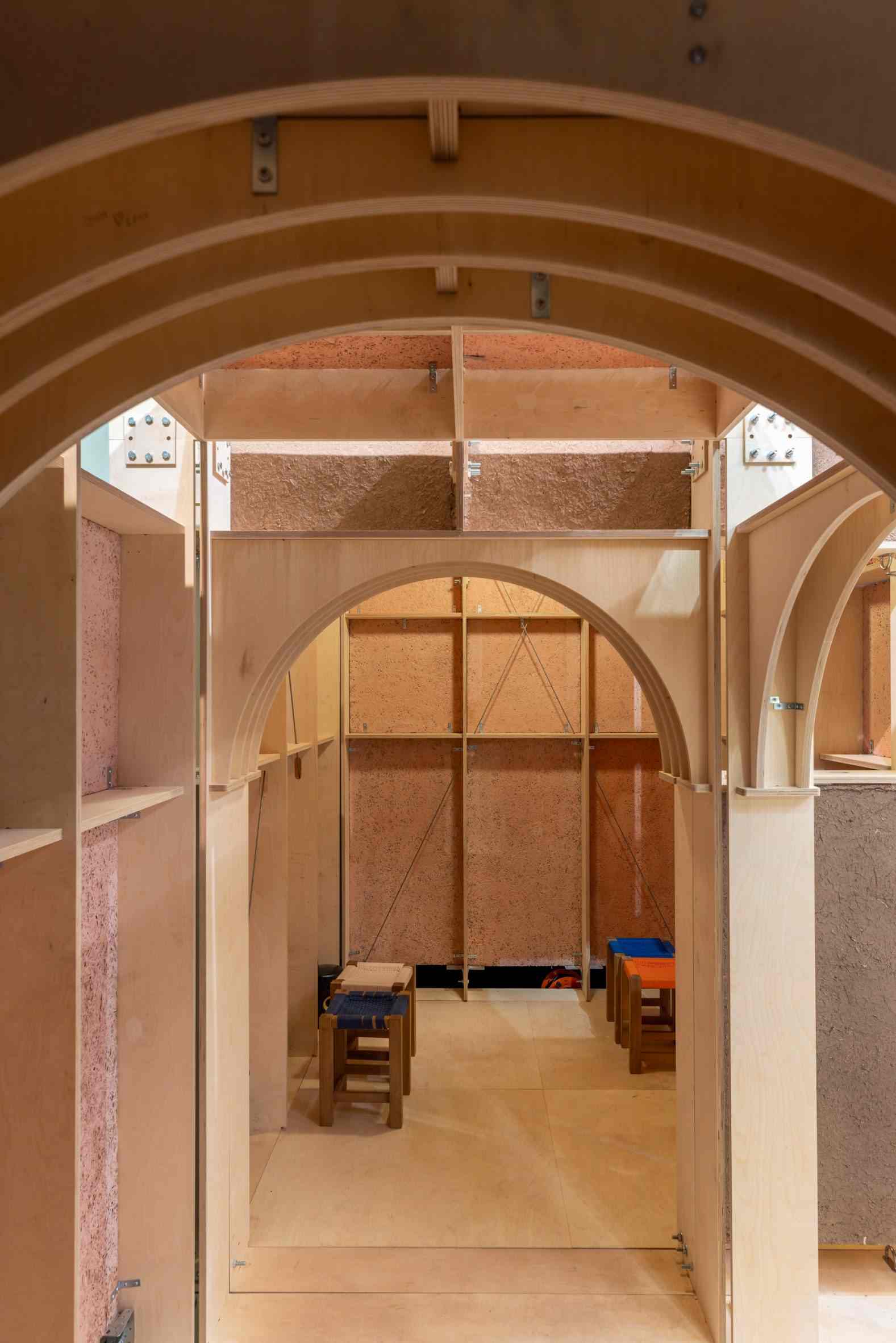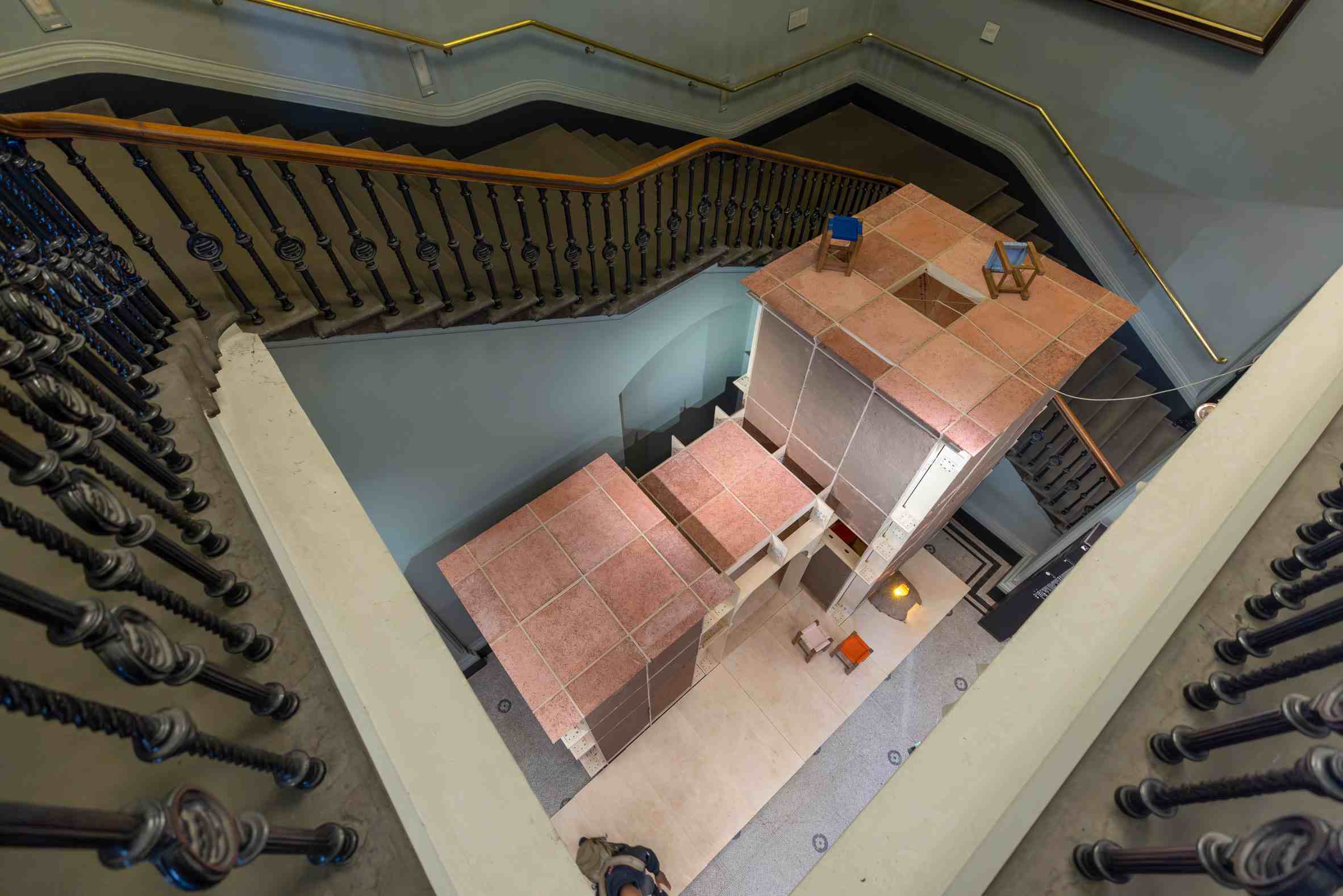
As part of the London Design Festival, artist Roo Dhissou and the UK-based studio Intervention Architecture unveiled Heal, Home, Hmm, a striking modular pavilion, which is now on display at the Victoria and Albert Museum (V&A). Positioned at the base of one of the museum’s sweeping staircases, the pavilion is both an architectural object and a cultural statement, demonstrating how traditional building practices can inform contemporary design while addressing urgent environmental and social issues. SURFACES REPORTER (SR) highlights how Punjabi mud-building traditions and methods could be integrated into 21st-century housing solutions.

For Heal, Home, Hmm, Dhissou and her collaborators worked with mud reclaimed from the construction sites of London’s High Speed Two (HS2) railway project.
Rescued and reclaimed
The project draws directly from Punjabi mud-building traditions, which Dhissou experienced during her upbringing. In her vision, these vernacular methods of construction, which is rooted in materials such as mud, clay, straw, hemp and wattle-and-daub, are not relics of the past but valuable resources for the future. According to her, by revisiting these natural materials, modern British homes could become more sustainable and healthier. Unlike conventional concrete and synthetic-based construction systems, cob and clay walls are porous and capable of absorbing and releasing moisture, reducing the risk of mould.

According to her, by revisiting these natural materials, modern British homes could become more sustainable and healthier.
Mould is caused by moisture trapped in the walls. For Dhissou, in the past, whether in India, Africa, or even parts of the UK, she built with natural materials. These practices created breathable environments. But today, we have moved away from those traditions in favour of extractive practices that damage both our health and our planet. For Heal, Home, Hmm, Dhissou and her collaborators worked with mud reclaimed from the construction sites of London’s High Speed Two (HS2) railway project. Instead of sending this surplus earth to landfill, they repurposed it into building material. Dhissou believes that the pavilion is proof of how natural building materials can be put back into use.

The project draws directly from Punjabi mud-building traditions, which Dhissou experienced during her upbringing.
From Punjab to London
The pavilion’s structure combines a wooden frame with cob panels, creating walls that are at once robust and tactile. The design incorporates arched doorways, which lend a graceful rhythm to the modular volumes and a flat roof that doubles as a usable terrace. The building process employed a mix of sand, straw, hemp, and clay. The project also carries personal resonance for Dhissou. Growing up in Punjab, she lived in a house that still retained some cob clay walls even after many of its original features had been replaced by concrete. However, the pavilion is not just a nostalgic gesture. It demonstrates how ancient techniques can evolve through contemporary methods. The Heal, Home, Hmm pavilion is designed as a modular, flat-pack system, more like a fusion of tradition and modernity.
Image credit: V&A